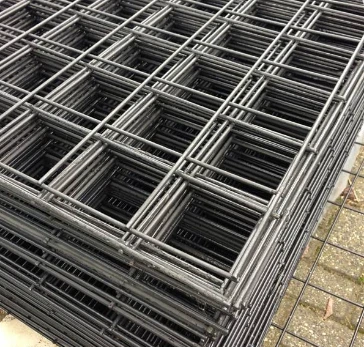
Dec . 05, 2024 03:51 Back to list
Understanding Different Sizes of Welding Mesh for Your Projects
Understanding Welding Mesh Sizes A Comprehensive Guide
Welding mesh, often referred to as welded wire mesh, plays a crucial role in various construction and industrial applications. Its versatility and strength make it a preferred choice among engineers and builders. But the effectiveness of welding mesh largely depends on its size and specifications. This article aims to delve into the different sizes of welding mesh, their typical applications, and the factors you should consider when choosing the right size for your project.
What is Welding Mesh?
Welding mesh is a grid-like structure made from steel wire that is welded at every intersection. This process creates a strong and rigid framework that can be used for a variety of purposes, including reinforcement in concrete structures, fencing, and even in agricultural applications. The mesh is available in a wide range of sizes, gauges, and configurations, making it adaptable to many fields.
Common Sizes and Configurations
When discussing welding mesh sizes, it is essential to consider both the wire diameter and the spacing between the wires. Common wire diameters range from 1.0 mm to 6.0 mm, while the spacing can vary from 25 mm to 200 mm (1 inch to 8 inches). The most commonly used welding mesh sizes in construction include
1. 10 x 10 cm (or 100 x 100 mm) This size utilizes a wire diameter of approximately 4 mm. It is preferred for applications requiring a moderate strength level, such as slabs and flooring.
2. 15 x 15 cm (or 150 x 150 mm) With a wire diameter of 5 mm, this mesh is often used in medium to heavy-duty applications, such as highway construction, where additional support is necessary.
3. 20 x 20 cm (or 200 x 200 mm) This size is designed for heavy-duty applications with a thicker wire diameter of about 6 mm. It is often used in industrial flooring and high-load machinery areas.
welding mesh sizes

Factors to Consider When Choosing Welding Mesh Size
Selecting the right welding mesh size depends on several factors
1. Application Purpose Determine what the mesh will be used for. Is it for reinforcing concrete, building fences, or agricultural purposes? Different applications require different strengths and grid sizes.
2. Load Requirements Assess the load the mesh will bear. Heavier loads necessitate thicker wire and smaller spacing between the mesh openings.
3. Environmental Conditions Consider the environment where the mesh will be used. Areas prone to corrosion may need galvanized or stainless steel welding mesh to ensure longevity and durability.
4. Ease of Installation Larger mesh sizes can be easier and quicker to install, but they may not provide the necessary reinforcement for specific types of constructions.
5. Cost Finally, factor in the budget. Thicker wires and smaller mesh sizes are often more expensive, but investing in high-quality mesh can lead to savings in repairs and maintenance down the line.
Conclusion
Welding mesh sizes are critical in determining the effectiveness of reinforcement materials in various construction and industrial settings. By understanding the different sizes and their applications, you can make an informed decision that addresses your project’s needs effectively. Always consider the load requirements, the environment, and the specific applications when choosing the right welding mesh size. With the right choice, your project will benefit from enhanced strength and durability, ensuring it stands the test of time.
-
Why a Chain Link Fence is the Right Choice
NewsJul.09,2025
-
Upgrade Your Fencing with High-Quality Coated Chicken Wire
NewsJul.09,2025
-
The Power of Fence Post Spikes
NewsJul.09,2025
-
The Best Pet Enclosures for Every Need
NewsJul.09,2025
-
Secure Your Property with Premium Barbed Wire Solutions
NewsJul.09,2025
-
Enhance Your Construction Projects with Quality Gabion Boxes
NewsJul.09,2025
Products categories











